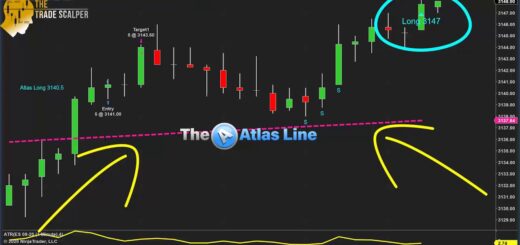Mastering Day Trading: Essential Strategies and Tools for Success
In the fast-paced world of day trading, having a solid strategy and the right tools is crucial for achieving consistent success. Whether you’re a seasoned trader or just starting, understanding the importance of setting hard stops, avoiding prolonged losing positions, and utilizing automated trading systems can significantly enhance your trading performance.
This blog post explores these key strategies and tools to help you become a more effective trader.
The Importance of Hard Stops and Cutting Losses
One of the fundamental principles in trading is to set hard stops and adhere to them. A hard stop is a predetermined exit point to prevent further losses, helping you manage risk and protect your capital.
If a trade is going to work, it should show positive movement almost immediately after you enter. Time is a critical factor in trading. If you enter a trade and it doesn’t move in your favor within a few bars, it’s a signal to cut it loose. For example, if your first trade is red and the subsequent trade is also red, it’s a bad sign. Conversely, if the trade starts moving in your favor immediately, it indicates a promising opportunity.
Leveraging Automated Trading Systems
Automated trading systems, such as the Trade Scalper and the Autopilot, can greatly enhance your trading efficiency. These systems generate signals based on specific criteria and execute trades on your behalf, reducing emotional stress and the time commitment of manual trading.
The Trade Scalper
The Trade Scalper is ideal for traders who prefer a quick in-and-out trading style. Available on platforms like TradingView and NinjaTrader, the Trade Scalper provides signals for optimal entry and exit points. For instance, a “double wick” signal suggests a potential long trade. If the trade doesn’t start moving in your favor almost immediately, it’s best to exit the trade.
The Autopilot Trading System
The Autopilot trading system is another powerful tool that automates your trading strategy. It analyzes the market, decides whether to buy or sell, and executes trades based on predefined settings. Key features of the Autopilot include:
- Look Back Bars: Determines how many bars the system looks back to make a trading decision.
- Order Quantity: Allows trading multiple contracts or micros, starting with a single contract for safety.
- Maximum Bars in Trade: Limits the duration of a trade to prevent being stuck in a position indefinitely.
- Stop and Target Settings: Configurable stop loss and profit targets for both long and short positions.
- Trailing Stop and Break Even: Features that help maximize profits by trailing the stop loss behind profitable trades and moving the stop to break even once a trade is favorable.
Practical Tips for Using Automated Systems
When using automated trading systems like the Autopilot, it’s essential to:
- Start Small: Begin with simulated trading or micro contracts to minimize risk.
- Set Realistic Goals: Use daily profit and loss limits to prevent overtrading and protect your capital.
- Adjust Settings Based on Market Conditions: Different markets (e.g., E-mini S&P, NASDAQ, Crude Oil) may require different settings for optimal performance.
- Monitor the System: While automation handles many tasks, it’s crucial to monitor the system and adjust settings as needed.
Optimal Trading Hours
Timing is everything in trading. Based on experience, some of the best times to trade are between 9:55 AM and 1:50 PM Eastern Time. This window offers ample opportunities with reduced volatility compared to market opening and closing times. However, some traders prefer pre-market or overnight trading, depending on their strategy and market conditions.
Conclusion
Successful trading requires a combination of discipline, strategy, and the right tools. By setting hard stops, avoiding prolonged losing positions, and leveraging automated trading systems like the Trade Scalper and the Autopilot, you can improve your trading outcomes. Remember to start small, set realistic goals, and adjust your settings based on market conditions. With these strategies, you’ll be well on your way to becoming a more effective and profitable trader.
For more information and to join our community of traders, visit DayTradeToWin.com and subscribe to our YouTube channel for the latest updates and trading tips. Happy trading!




